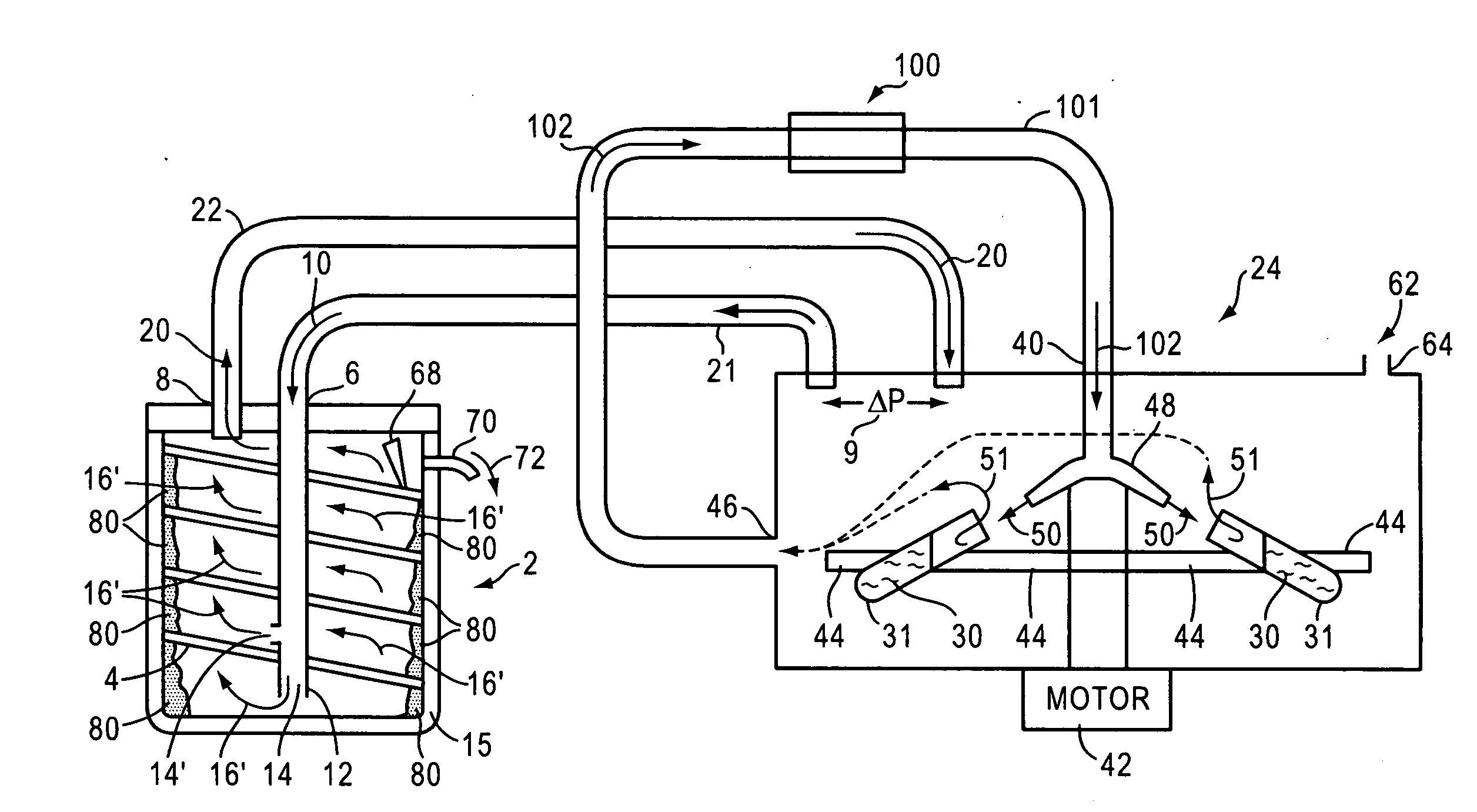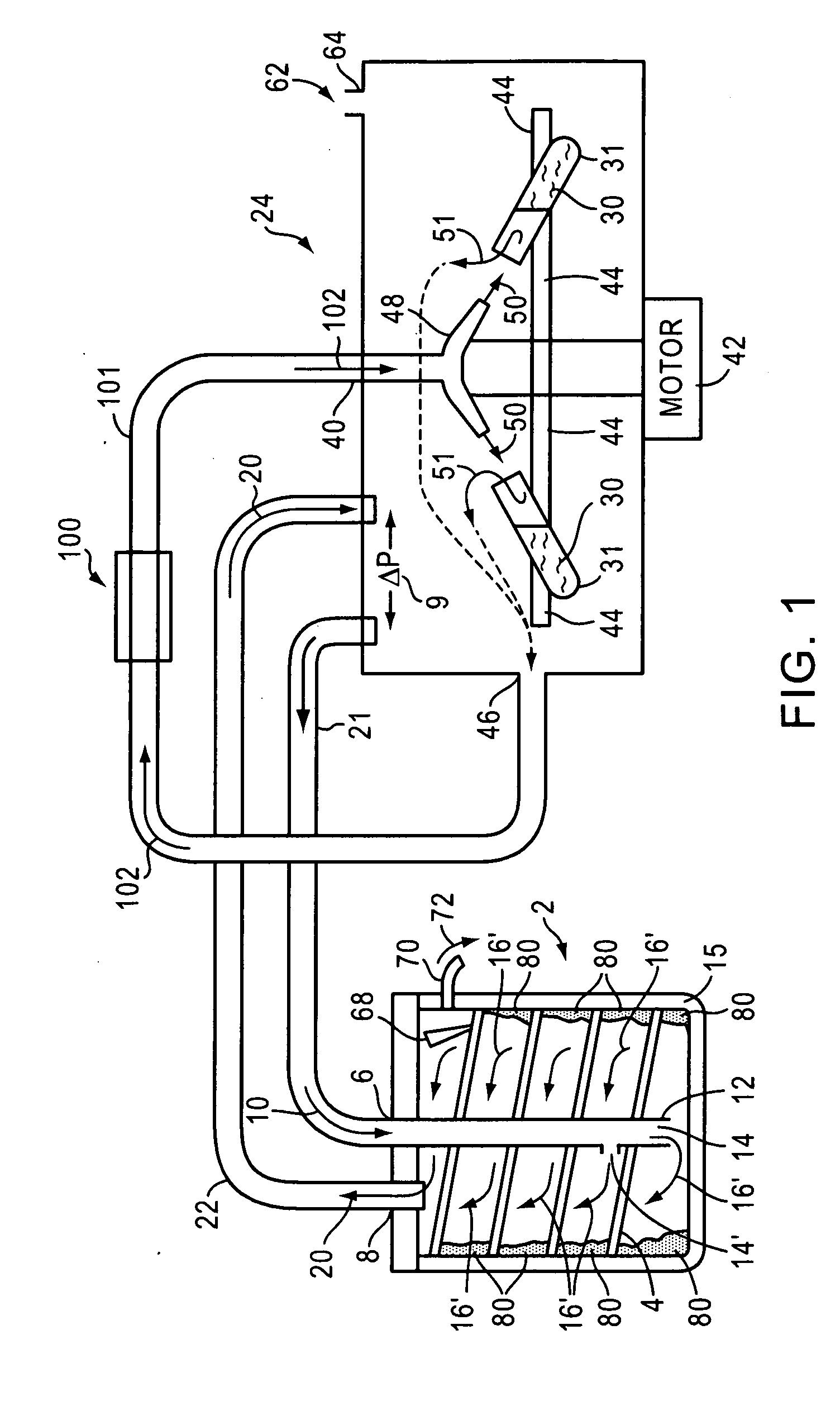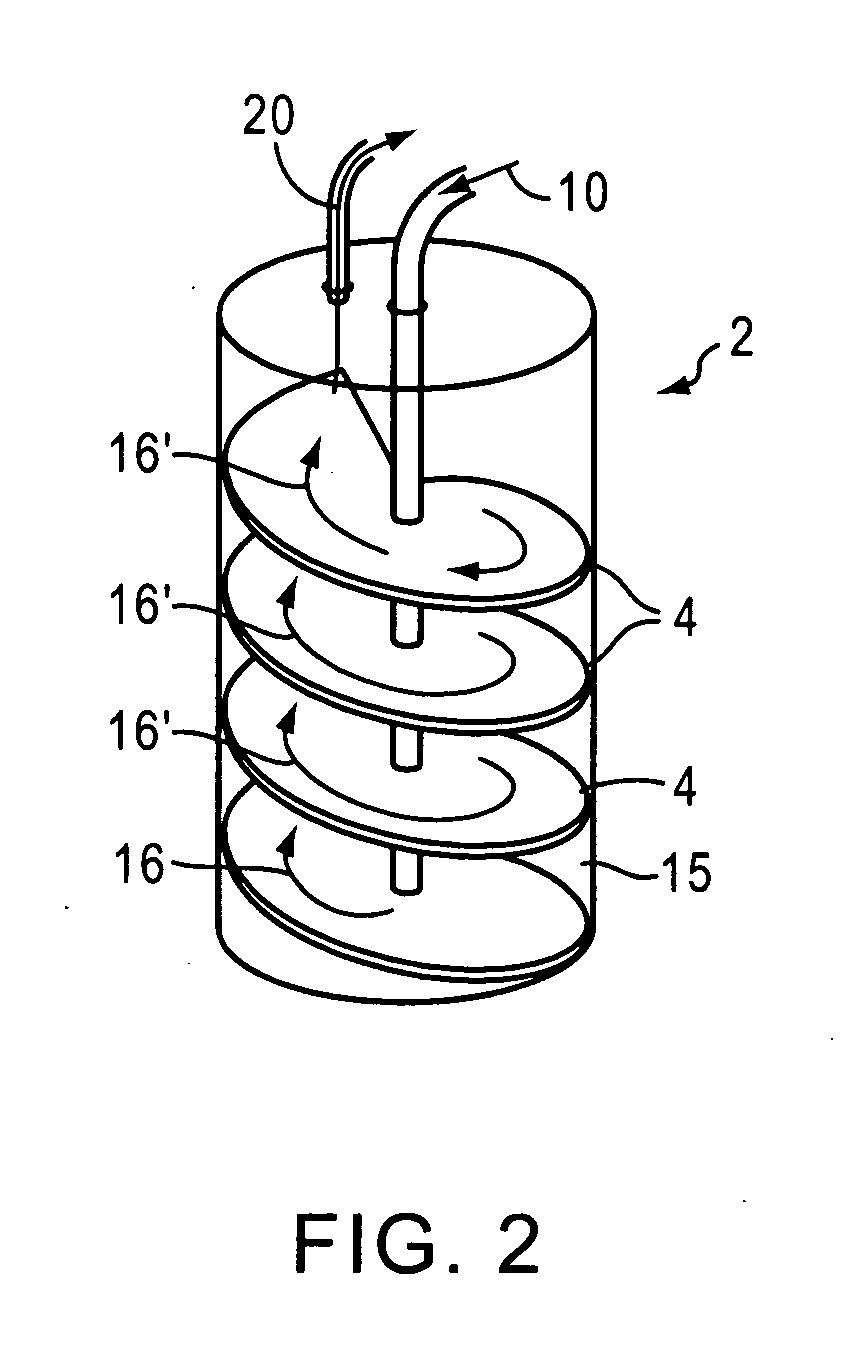Cold trap to increase gas residence time to increase condensation of vapor molecules
- Summary
- Abstract
- Description
- Claims
- Application Information
AI Technical Summary
Benefits of technology
Problems solved by technology
Method used
Image
Examples
Embodiment Construction
[0022]FIG. 1 includes a cold trap 2 with a vertical tube 12 leading to a bottom exit 14. Incoming flowing wet vapor 10 circulate 16′ up the spiral inclined plane 4 forming a path to an outlet 8. The gas flows 16′ from the opening 14 and hits the inner wall of the container 15 where it condensers 80. The wet vapor follows the spiral path 4 around the center tube 12 tracing a path (the 16's) to the outlet 8. The dry exiting gas flows 20 via the tube 22 back to the source 24 of the wet vapor. The outside of the container 15 is cooled and the solvent molecules in the wet vapor condense and solidify 80 along the inner side of the container 15. There may be other exits from the center above the lowest exit 14. These other exits may be smaller allowing less vapor to exit the center tube, but they allow the cold trap to operate when the exit 14 is effectively plugged by the condensed material 80.
[0023]The spiral inclined plane 4 is made to abut the inner surface of the container 15, and the...
PUM
| Property | Measurement | Unit |
|---|---|---|
| Thermal conductivity | aaaaa | aaaaa |
| Residence time | aaaaa | aaaaa |
Abstract
Description
Claims
Application Information
 Login to View More
Login to View More - R&D
- Intellectual Property
- Life Sciences
- Materials
- Tech Scout
- Unparalleled Data Quality
- Higher Quality Content
- 60% Fewer Hallucinations
Browse by: Latest US Patents, China's latest patents, Technical Efficacy Thesaurus, Application Domain, Technology Topic, Popular Technical Reports.
© 2025 PatSnap. All rights reserved.Legal|Privacy policy|Modern Slavery Act Transparency Statement|Sitemap|About US| Contact US: help@patsnap.com



